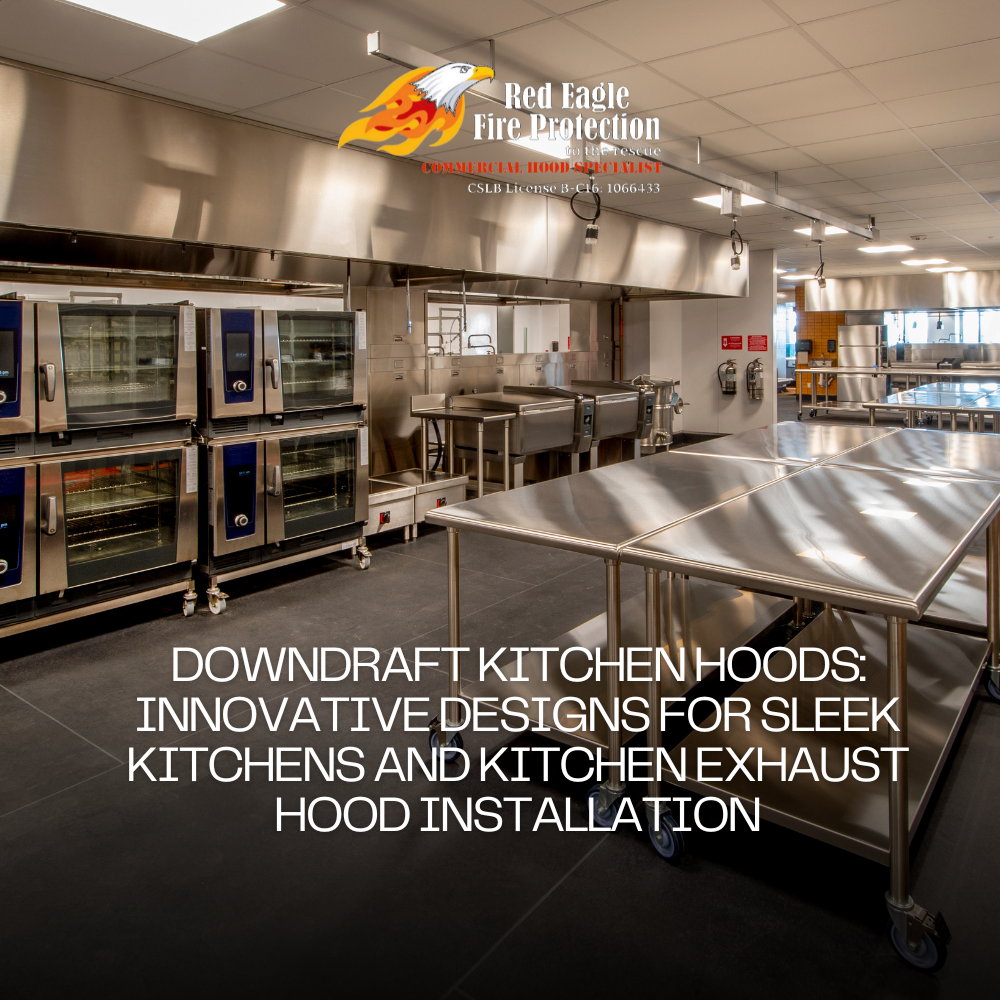kitchen exhaust hood installation – Downdraft kitchen hoods are a modern and innovative solution for ventilation in sleek, contemporary kitchens. Unlike traditional hoods that hang above the stove, downdraft hoods are installed at countertop level, often retracting out of sight when not in use. This design provides a clean, unobstructed look while still offering effective ventilation. Here, we explore the features, benefits, and installation tips for downdraft kitchen hoods to help homeowners make informed decisions for their kitchen spaces.
Features of Downdraft Kitchen Hoods
1. Discreet Design: One of the most notable features of downdraft kitchen hoods is their discreet design. These hoods are installed directly into the countertop or behind the cooktop, retracting when not in use. This keeps the kitchen looking sleek and uncluttered, perfect for minimalist and modern designs.
2. Efficient Ventilation: Despite their compact size, downdraft hoods are equipped with powerful fans that pull smoke, steam, and odors downwards and out through ductwork. This ensures that cooking fumes are effectively removed from the kitchen area.
3. Versatile Placement: Downdraft hoods can be installed with various types of cooktops, including gas, electric, and induction. This versatility makes them suitable for a wide range of kitchen designs and layouts, particularly where traditional overhead ventilation might be challenging.
4. Advanced Controls: Many downdraft hoods come with advanced control features such as touch controls, variable fan speeds, and automatic sensors. These features allow for easy operation and customization based on cooking needs.
5. High-Quality Materials: Downdraft hoods are typically made from durable materials like stainless steel and tempered glass, ensuring longevity and ease of cleaning. Their construction also contributes to their sleek, modern appearance.
Benefits of Downdraft Kitchen Hoods
1. Aesthetically Pleasing: Downdraft hoods are ideal for homeowners looking to maintain a clean and open kitchen design. Their retractable nature means they are hidden when not in use, preserving the visual flow of the kitchen.
2. Space-Saving: By eliminating the need for an overhead hood, downdraft systems free up space above the cooktop, which can be used for storage or to maintain an open feel in the kitchen. This is particularly beneficial in kitchens with limited space or in island installations where a traditional hood might obstruct views.
3. Improved Air Quality: Effective ventilation is crucial in any kitchen. Downdraft hoods provide strong suction power to remove cooking fumes and odors, helping to maintain good air quality and a comfortable cooking environment.
4. Flexibility in Kitchen Design: Downdraft hoods offer flexibility in kitchen design, allowing for innovative layouts that wouldn’t be possible with traditional overhead hoods. They are especially useful in kitchen islands and open-plan spaces where maintaining sight lines is important.
5. Enhanced Safety: By removing smoke and steam at the source, downdraft hoods help reduce the buildup of grease and other potentially flammable materials in the kitchen, contributing to a safer cooking environment.
Installation Tips for Kitchen Exhaust Hood Installation
1. Plan the Layout Carefully: Before kitchen exhaust hood installation, carefully plan the kitchen layout. Ensure that there is sufficient space behind or below the cooktop for the hood mechanism and ductwork. This is especially important in island installations where space can be limited.
2. Professional Installation: Due to the complexity of installing downdraft systems, professional installation is highly recommended. A professional installer will ensure that the hood is properly integrated with the cooktop and that the ductwork is correctly routed for efficient ventilation.
3. Ensure Proper Venting: Downdraft hoods require precise venting to function effectively. The ductwork should be as straight and short as possible to minimize resistance and maximize airflow. Proper venting is crucial for effective smoke and odor removal.
4. Electrical Considerations: Downdraft hoods need electrical connections for their fans and controls. Ensure that the electrical work complies with local codes and regulations. It may be necessary to hire a licensed electrician to handle the wiring safely.
5. Maintenance and Cleaning: Regular maintenance is essential for keeping downdraft hoods operating efficiently. Clean the filters regularly and check the ductwork for any obstructions. Following the manufacturer’s maintenance guidelines will help prolong the life of the hood.
6. Test the System: After installation, thoroughly test the downdraft hood to ensure it is operating correctly. Check the fan speeds, controls, and ventilation efficiency to make sure it meets your cooking needs.
Downdraft kitchen hoods provide a stylish and innovative solution for modern kitchens, combining effective ventilation with a sleek, unobtrusive design. By understanding their features and benefits and following proper installation tips, homeowners can enhance both the functionality and aesthetics of their kitchen spaces.
READ MORE:
Kitchen Hoods: Stylish Options for Open-Plan Spaces and Kitchen Exhaust Hood Installation

